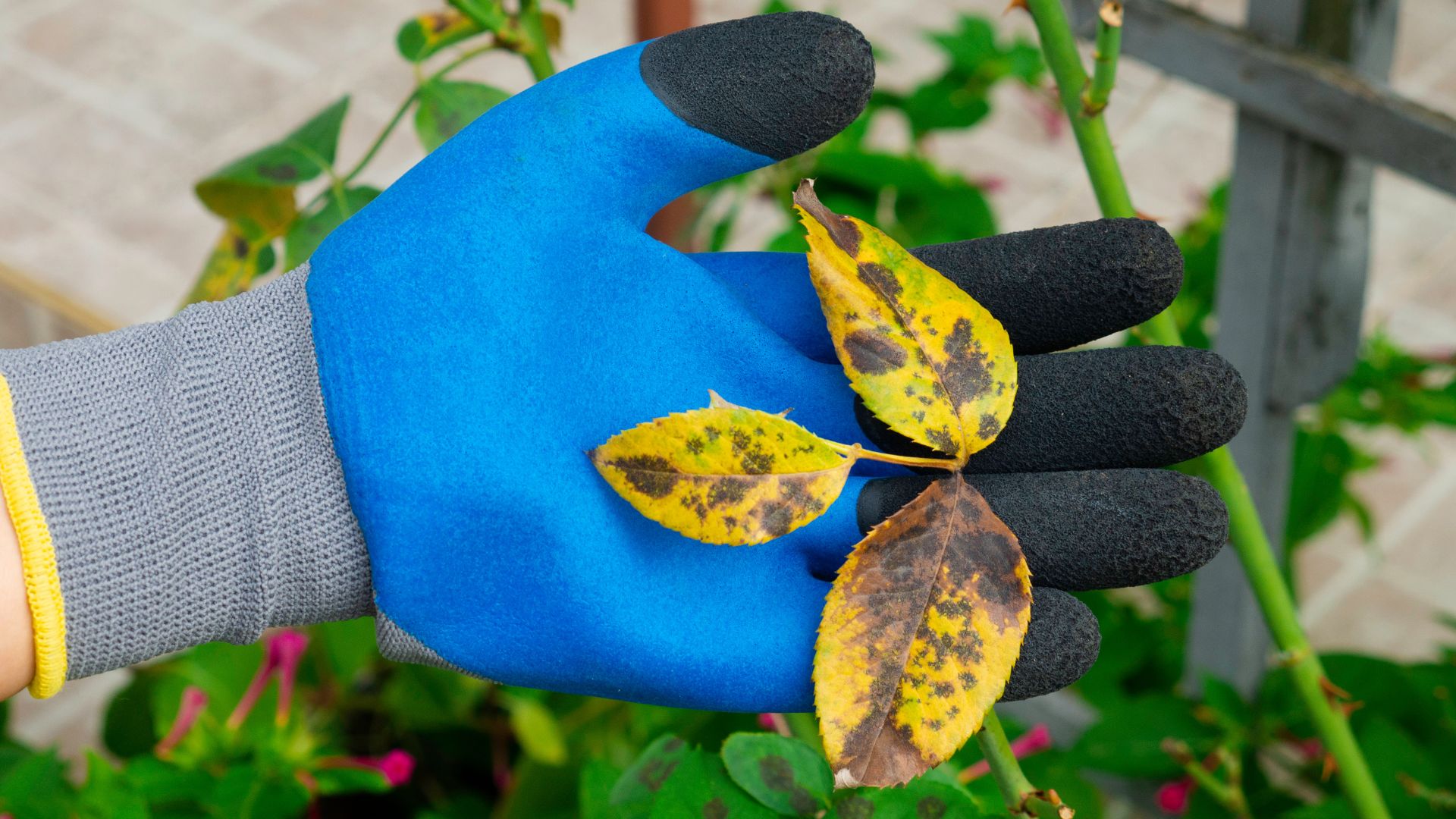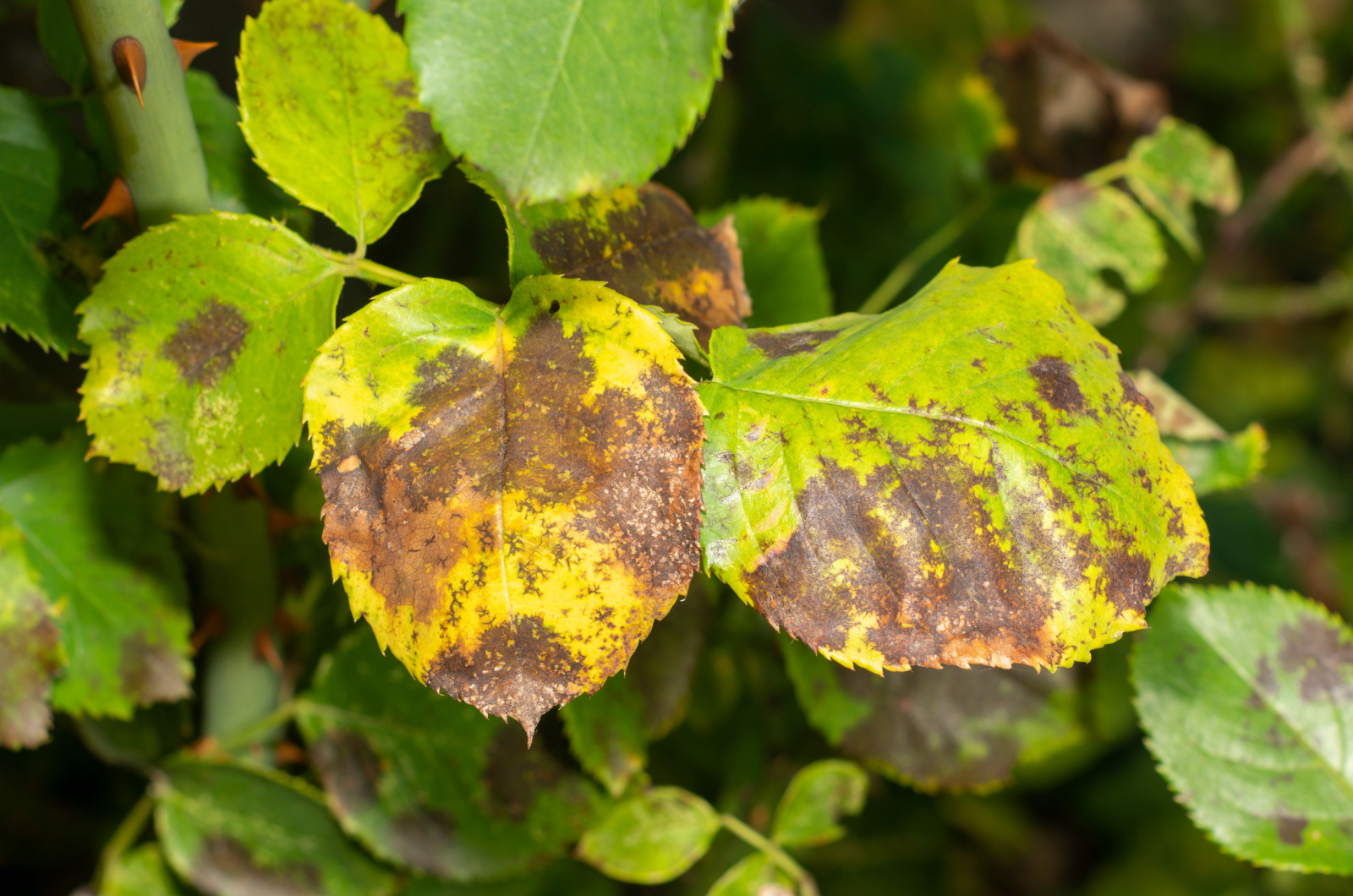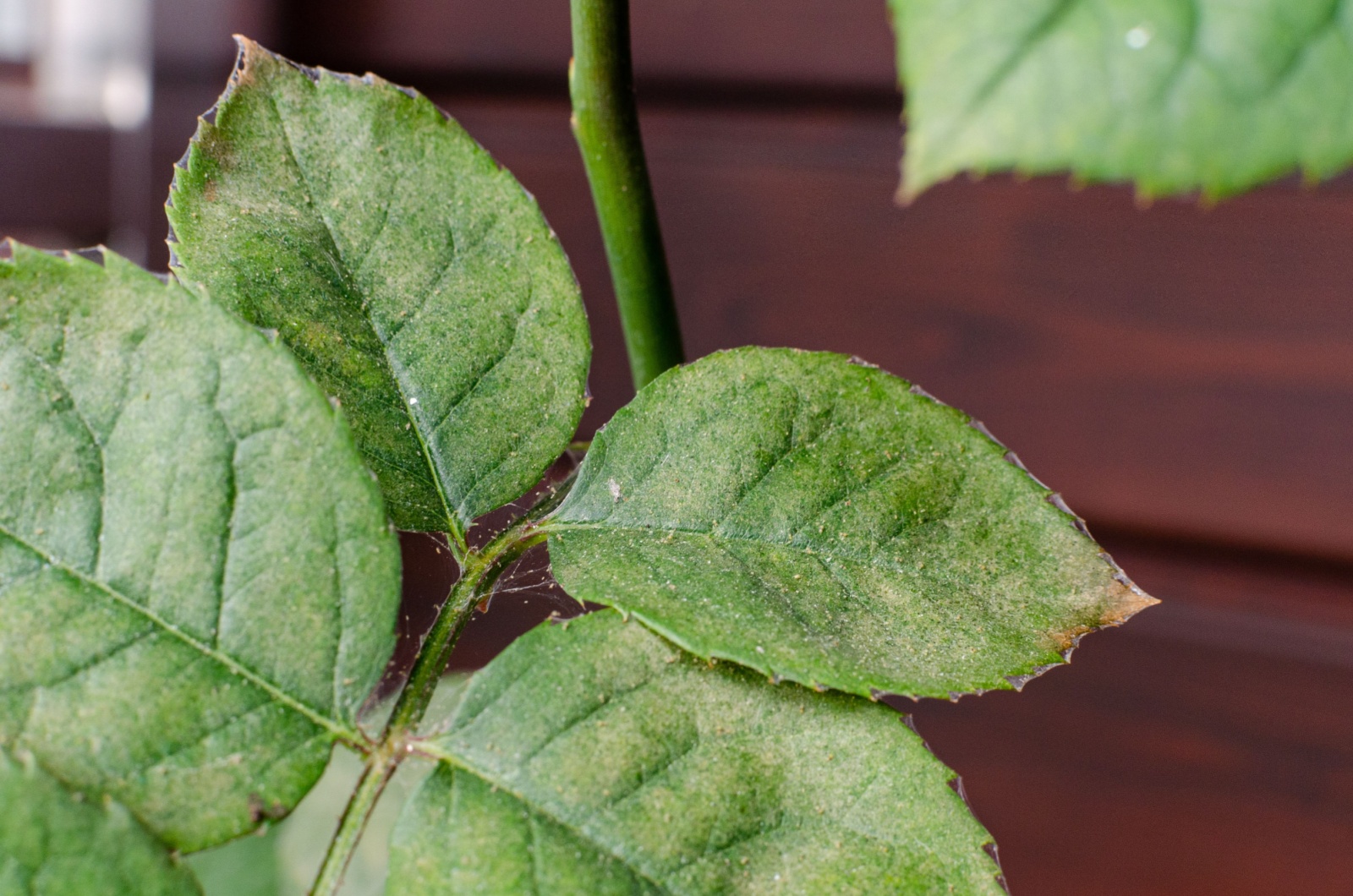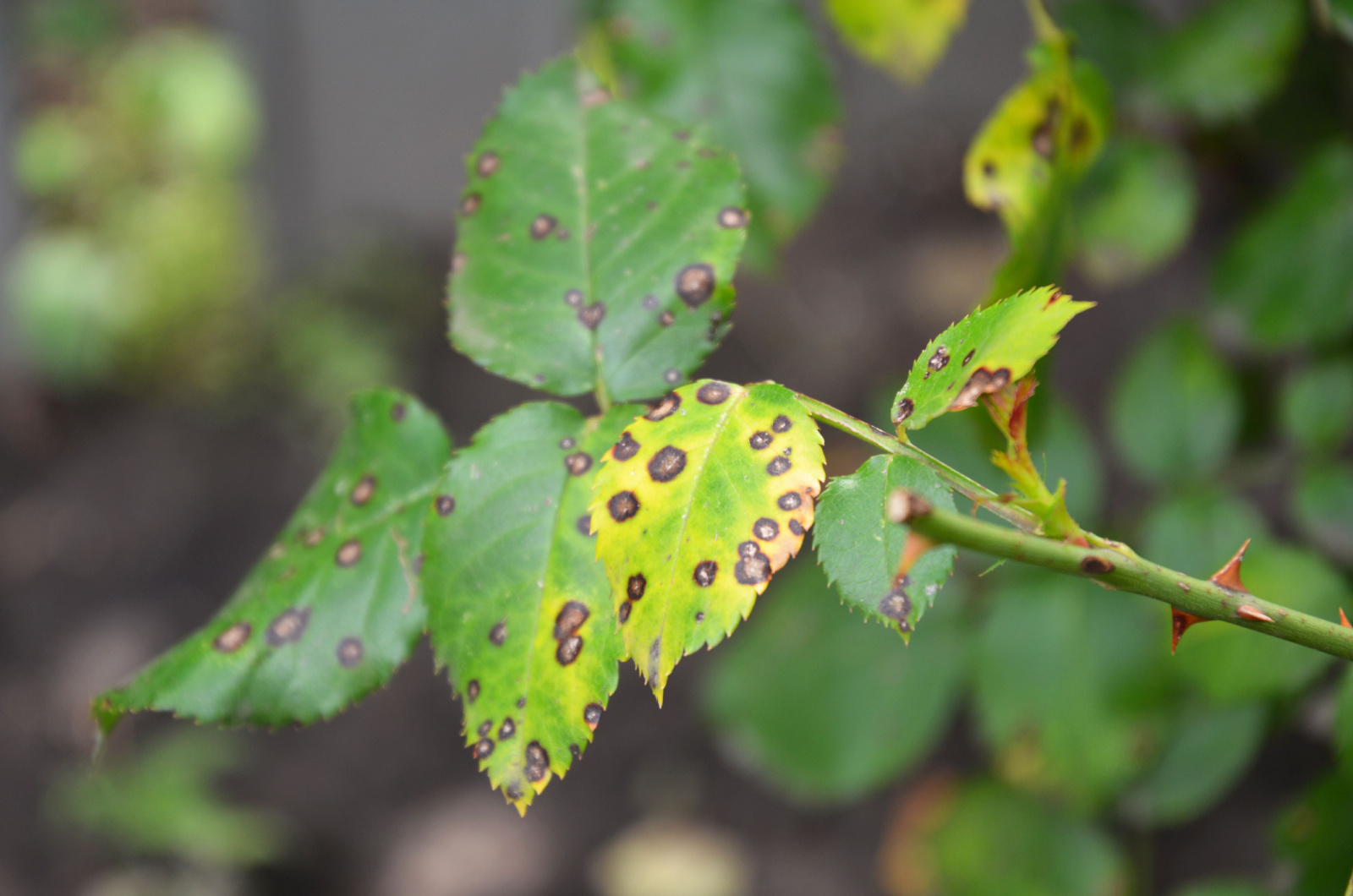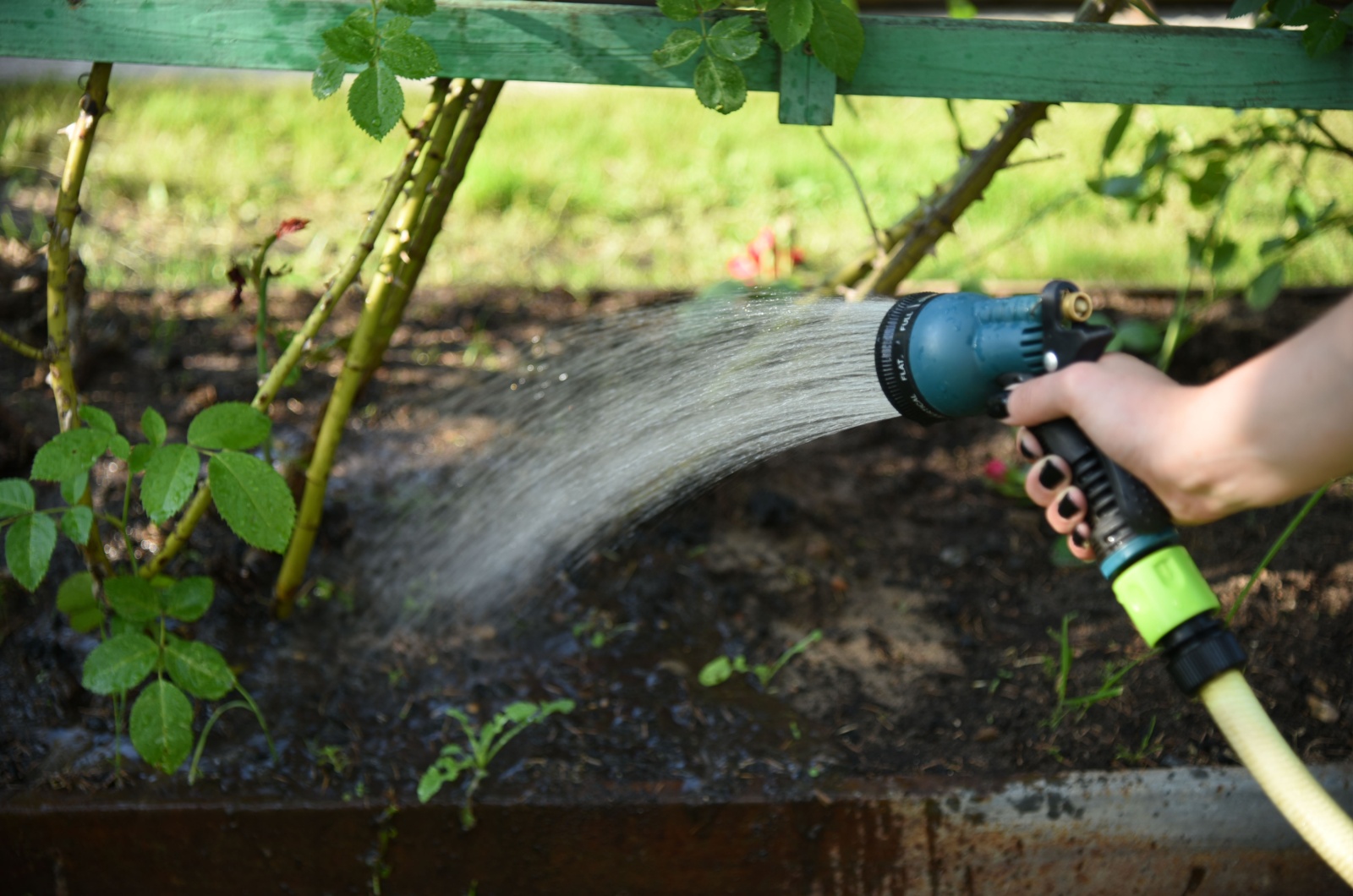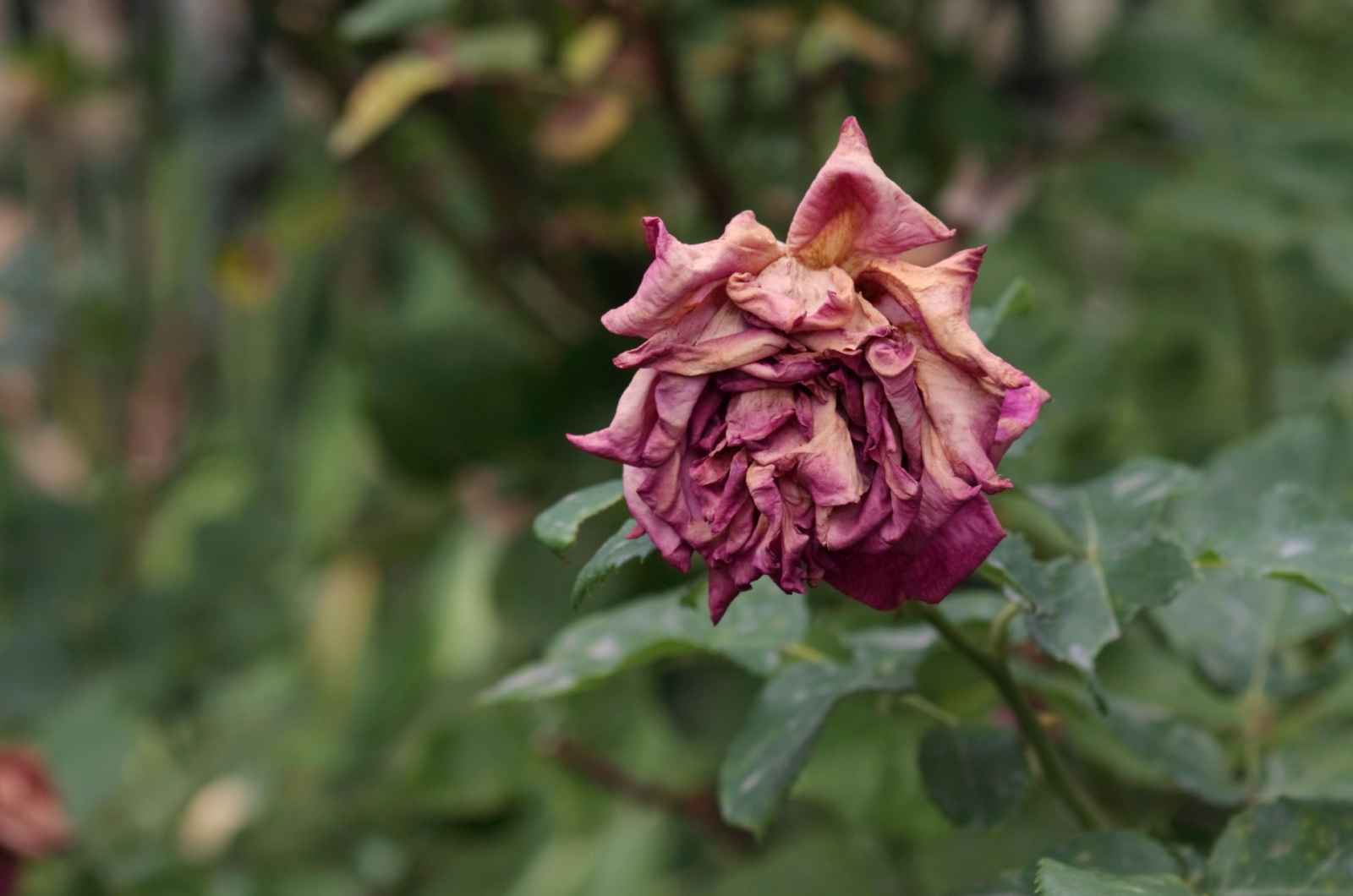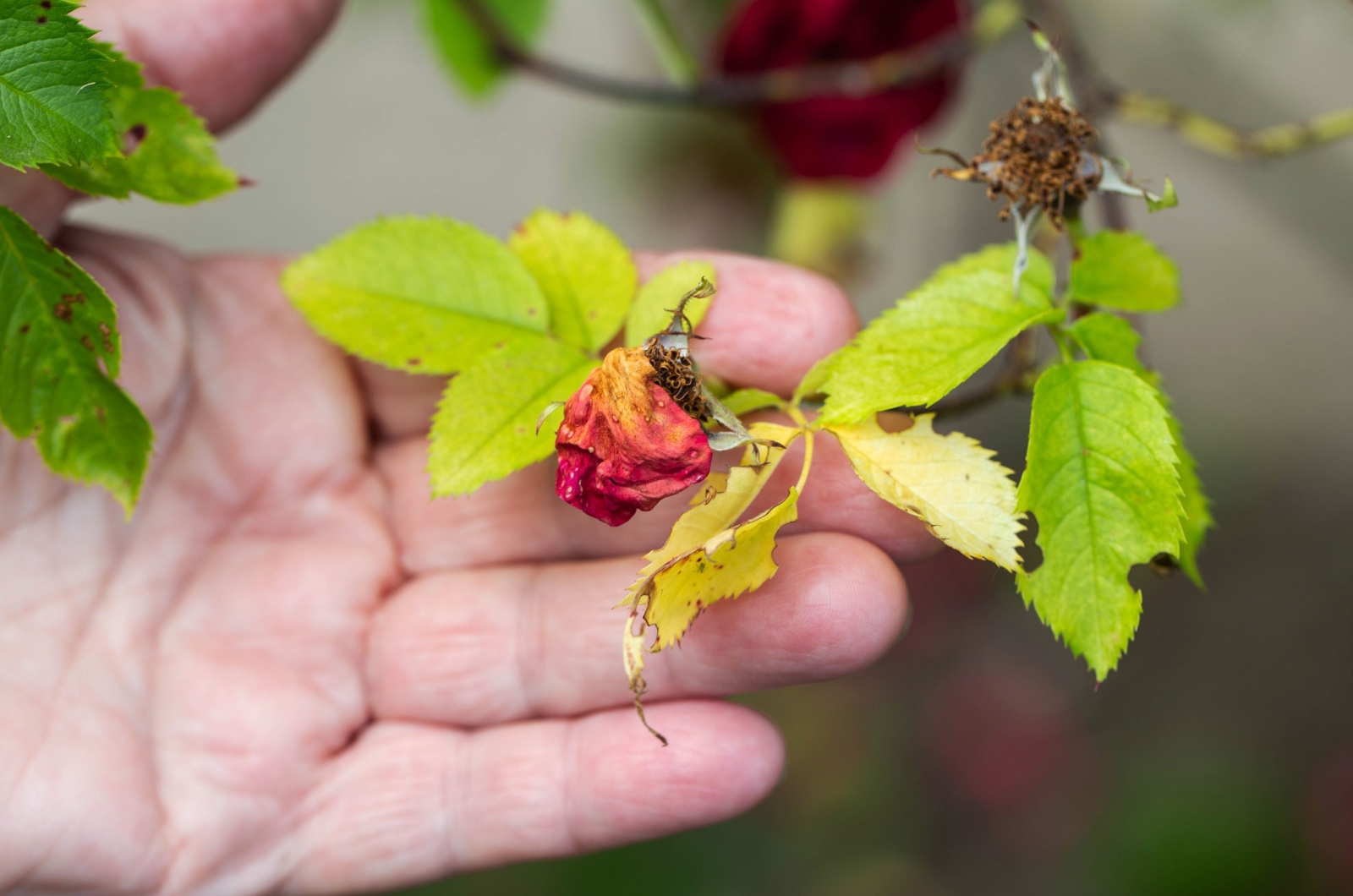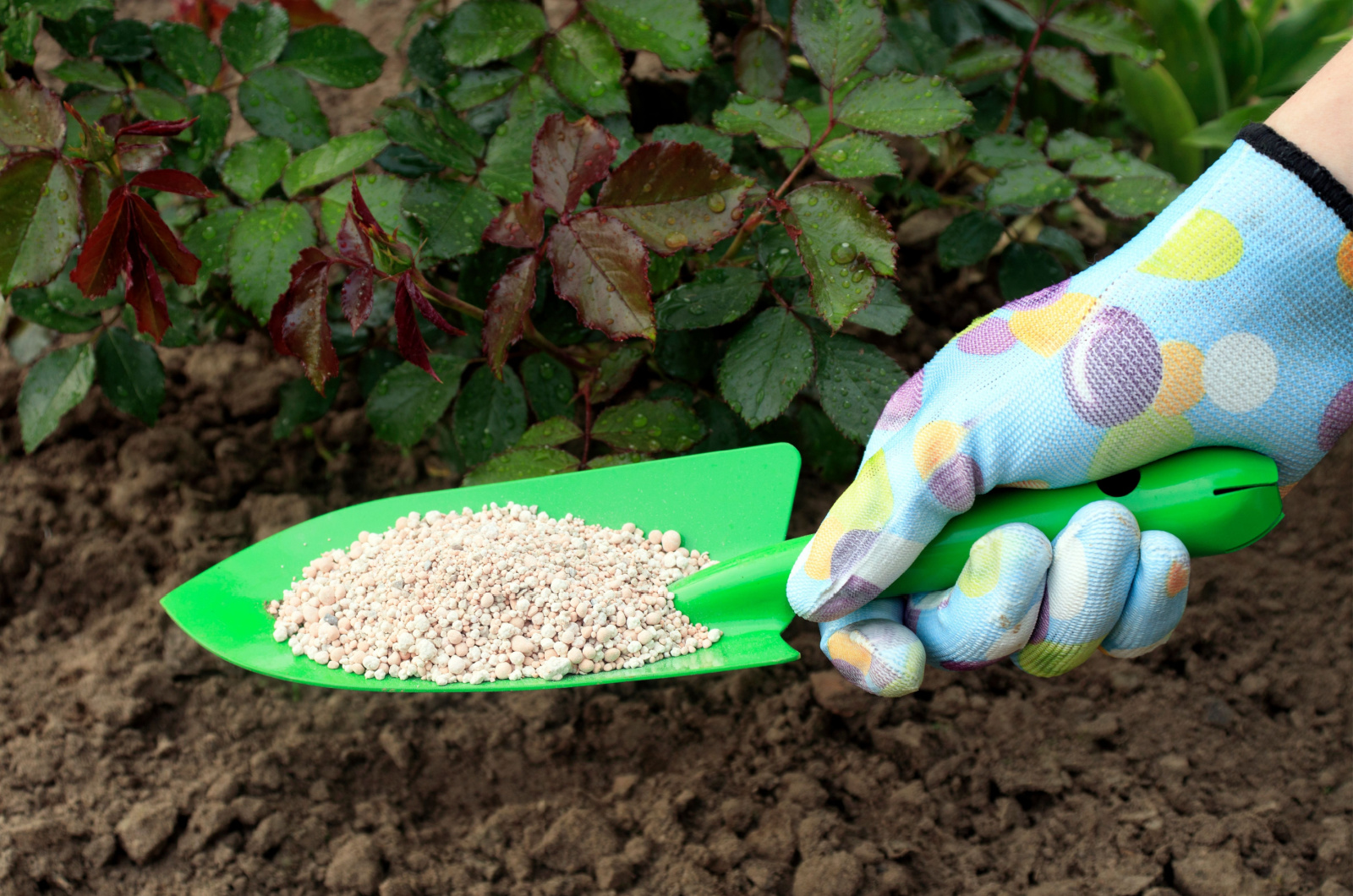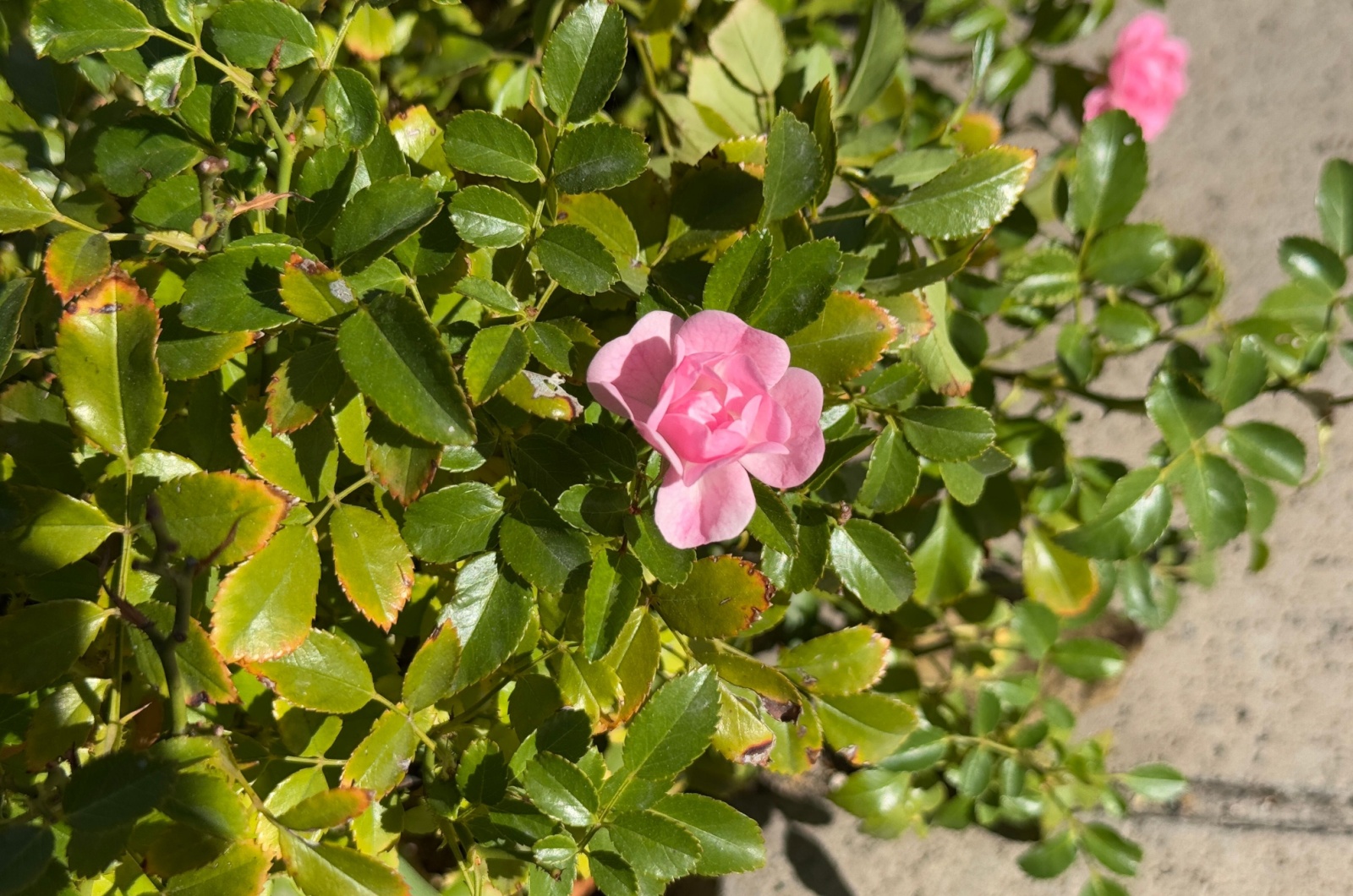Leaves definitely aren’t the first thing you’ll notice when you see a rose plant because its blossoms are the true showstoppers.
However, if the leaves turn yellow and look unhealthy, that’s the only thing you’ll see and it should worry you.
In this article, I’ll show you some of the potential reasons why your leaves are turning yellow. I’ll also give you some instructions on how to fix the issue and prevent it from occurring ever again.
Let’s get started!
1. Underwatering
One of the most frequent causes of yellow leaves in rose plants is lack of water. Apart from yellowing, your rose can also display wilting, slow growth, and may also start dropping buds.
If you underwater this plant, you can expect yellow leaves to develop brown edges and eventually dry up.
This is especially common in potted roses, so you should be careful with your watering schedule if you use this growing technique.
How To Fix
If you’re dealing with an underwatered rose, you should increase the watering frequency until the plant is fully hydrated.
These plants typically require 2 gallons of water two times a week, but only if all conditions are favorable. For instance, you’ll need to irrigate them more frequently during hot summer days and dry weather.
Pay attention to the soil when planting your roses; if your soil is too sandy, the chances of underwatering significantly increase.
One of the ways to fix this is to apply a layer of mulch, which will enhance moisture retention and prevent weeds from developing.
2. Spider Mite Infestation
We aren’t the only ones that adore these plants. Spider mites love munching on roses and they can be the reason for yellow leaves.
These tiny creatures will suck the sap and steal all the nutrients from the plant, causing discoloration.
The biggest problem with these pests is that they are very hard to spot, so you can quickly have severely infested roses.
Regularly inspect your roses and if the leaves turn yellow and there’s webbing on the leaf undersides, you have the culprit.
How To Fix
One of the common pest control methods includes showering rose leaves with water using a garden hose.
Since spider mites are excellent at hiding, don’t forget to spray the leaf undersides. Always employ this technique in the morning so that the foliage can dry up before the night.
If you’re dealing with a severe infestation, you should treat your roses with a neem oil solution.
3. Black Spot Disease
One of the most common diseases in roses is Black spot disease. If your rose is infected, it will display brown or black blotches surrounded with yellow halos.
Untreated roses can quickly start losing leaves, which is extremely dangerous.
The disease typically attacks these plants during cool and wet spring weather and it spreads by wind and water.
How To Fix
Unfortunately, you can’t save a rose that’s suffering from Black spot disease. The only thing left to do is get rid of the infected plant to prevent the disease from spreading to other plants.
Prevention methods include removing plant debris, sterilizing cutting tools, and watering in the morning so that the water can evaporate before night.
4. Overwatering
One of the most common rose growing mistakes is watering them too frequently. Bear in mind that too compact soil and frequent rainfall can also lead to this issue.
The symptoms are very similar to underwatering, but the soil will be mushy to the touch and may have a foul odor if the plant develops root rot infection.
How To Fix
If the leaves on your rose start turning yellow and the soil is waterlogged, you should delay watering until it dries entirely.
Pay attention to your soil and, if it contains too much clay, make sure to enhance drainage by adding compost.
You should check rose soil before each watering and don’t irrigate until the 2 top inches dry out.
5. Temperature Shock
Warm summer temperatures can also lead to yellowing in rose leaves. If your rose suffers from heat shock, its blooms will most likely start to wilt.
Additionally, harsh sun rays can scorch rose leaves and cause their edges to turn brown.
How To Fix
These plants need a lot of sun to thrive but the temperatures should range between 60 and 70 degrees Fahrenheit for healthy development.
If you live in warmer climates, I highly recommend ensuring some shade for your roses, especially during the hottest parts of the day. You should also add a layer of mulch because it will keep the soil cool and prevent stress.
When purchasing new rose plants, look for ones that can survive conditions in your USDA hardiness zone.
6. Lack Of Nutrients
Roses grow best in soils where the pH level is around 6.5. Too alkaline or too acidic soil types can decrease a plant’s ability to uptake nutrients such as nitrogen and iron.
Lack of these vital nutrients can lead to discoloration; the veins on your rose leaves will stay green but the leaf surface will turn yellow.
How To Fix
The first thing every new rose grower should do is perform a soil test. This gives you an opportunity to amend the soil with the necessary nutrients, and in that way prevent various issues.
If your rose is already established but the leaves turn yellow and the veins remain green, you should apply iron or nitrogen fertilizers.
7. Overfertilization
We all want our beloved roses to be healthy and produce as many blooms as possible. This is probably the reason why we feed them frequently in hope of the best results.
However, overfertilization has an adverse effect on these plants and you can severely damage the roots and leaves if you keep feeding them.
How To Fix
Avoid using synthetic fertilizers on your roses and opt for organic options. Compost does wonders for these plants; it encourages more rose blooms and keeps the plant happy and healthy.
If your roses aren’t established yet, there’s no need to feed them.
8. Lack Of Light
I’m sure you already know that roses love the sun and that it’s the only way to get an abundance of their splendid blooms.
If you don’t ensure enough light for your roses, they can display yellow foliage.
How To Fix
The easiest solution, of course, is to keep roses in a well-lit spot, making sure they receive 6-8 hours of sunlight daily.
You should also prune these plants in late winter so that all the rose parts get enough sunlight.
Every rose plant parent will panic if they see yellow leaves. Well, all you need to do is follow our guidelines and you’ll have the healthiest and happiest roses!

